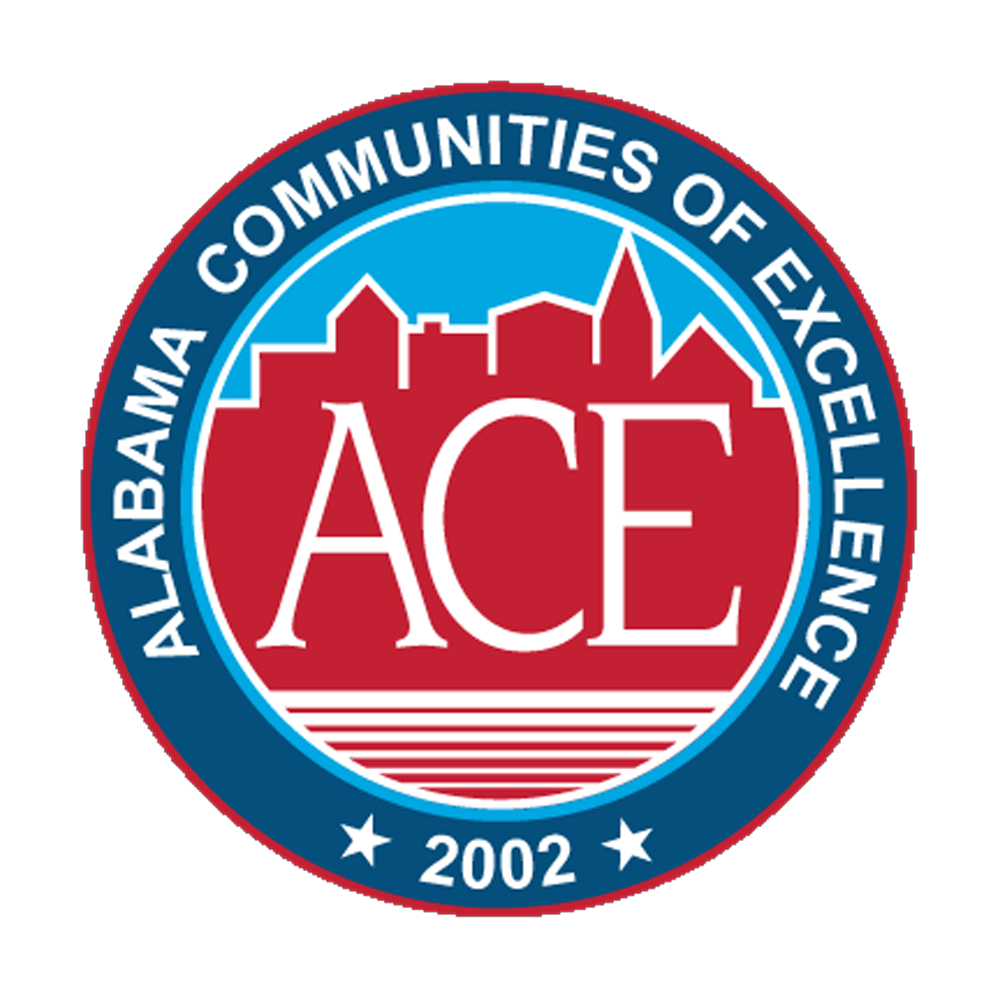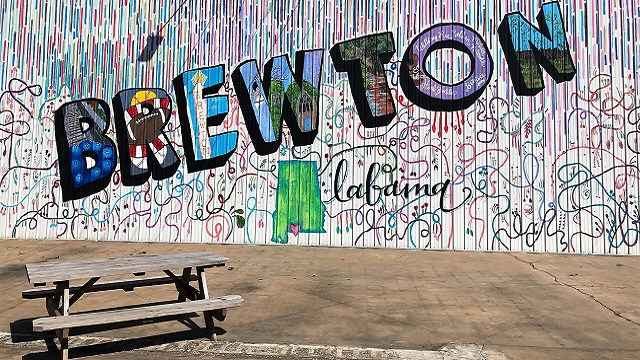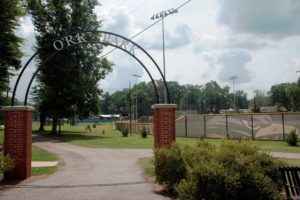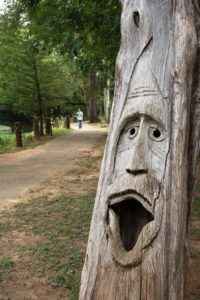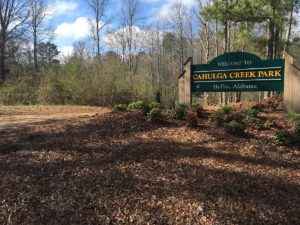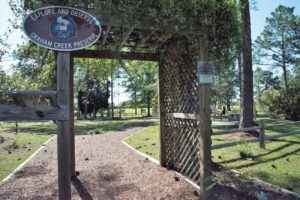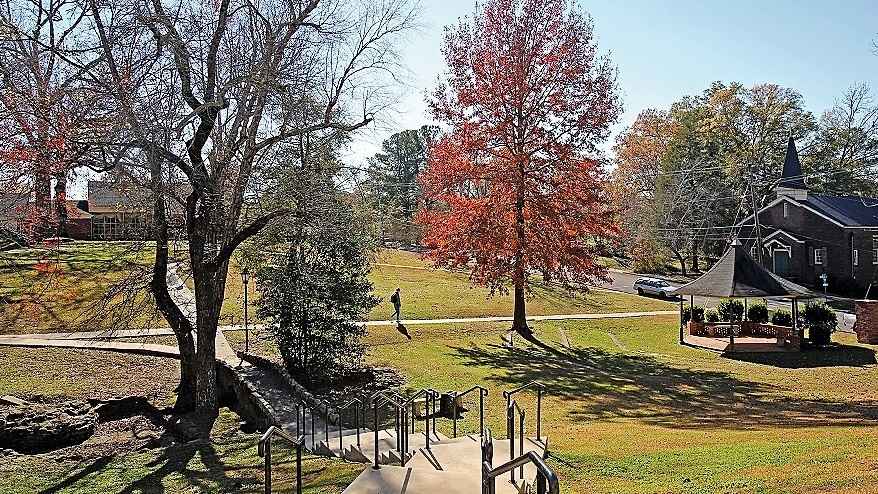
Until the 20th century, most city residents had to walk to take care of regular activities, such as shopping, attending church or going to work or school. So, naturally, the downtowns and public spaces throughout these cities were conducive to walking.
Then Henry Ford started mass-producing the Model T automobile, bringing an abrupt end to the pedestrian way of life. Suddenly, everything was altered to accommodate the car. In the process, it often became so difficult and unpleasant to walk around town that many people stopped trying.
But there is an effort afoot to revive the ancient activity of simply going outside and enjoying a good walk. Organizations, such as America Walks, are working to improve the conditions within communities to encourage people to walk for transportation, wellness and fun. And local officials are rediscovering the quality-of-life and economic benefits that come from having a more walkable community.
Earlier this year in Montevallo, the Alabama Communities of Excellence (ACE) program brought together walking advocates from throughout the state for a workshop on Walkable and Vibrant Small Towns. The goal was to offer step-by-step instructions on how to turn ideas into action and improve walkability.
“Incorporating connectivity and walkability into the design of your community offers so many economic, health, aesthetic and quality-of-life benefits that we jumped at this opportunity to partner with America Walks to bring their specialized knowledge and experience to our ACE towns,” said Sidney Hoover, executive director of ACE. “Workshop participants received practical advice and tools to use in planning and implementing walkability projects in their own communities.”
The workshop was led by Ian Thomas, a director of America Walks. Established in 1996, it is a collaborative of 700 organizations nationwide working to increase walking and improve walkability.
“There is a movement building,” Thomas said. “People are changing the environment and the systems within a community to make it safe and easy to walk for people of all ages and abilities. We’ve found that if you build great walkable places, then people will go out and walk. And the community gets a lot of benefits from that.”
Extensive details of the workshop can be found on the ACE website at www.alabamacommunitiesofexcellence.org/walkablecommunities2018/. Here are some of the highlights, with information that can be used to help improve walkability in any community.
The Health Benefits: Alabama ranks third in the nation in obesity, with nearly 36 percent of residents qualifying for that designation. That is why the Alabama Department of Public Health(ADPH) is promoting walkability.
“We work on local and state initiatives regarding obesity in the state, and having more walkable communities is one way to address this,” said Molly Killman, ADPH director of Nutrition and Physical Activity. “We can provide resources and data. So, if you’re trying to build the case for a new sidewalk or trail, we can help you build that case from the health perspective and connect you with the right partners.”
There is a need in many communities to improve walking conditions for people with disabilities, changes that will become more urgent as the U.S. population continues to age. It is estimated that by 2030 there will be 72 million Americans older than 65, which is 23 million more than today.
“What that means is we’re going to need infrastructure and design that allows people to age while still being active and healthy,” said Amy Rauworth, director of Policy and Public Affairs for Birmingham’s Lakeshore Foundation. “Most of us are eventually going to experience some sort of disability in our lives. So these improvements create better opportunities for everyone.”
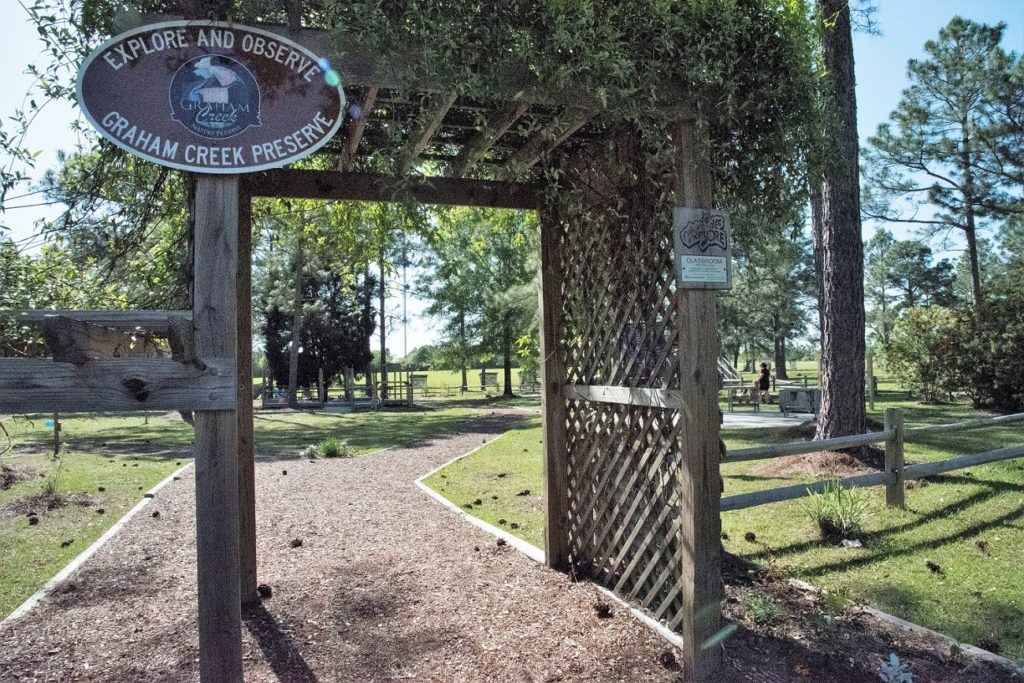
The Economic Benefits: For smaller communities, a downtown that emphasizes pedestrians over automobiles can provide an economic boost from visitors who otherwise might just drive through town without stopping.
“Cars don’t spend money. People spend money,” said Mary Helmer, president of Main Street Alabama. “You don’t want cars going through your downtown at 50 mph. They spend nothing. So what can we do to make people linger longer? Slow those vehicles down and give people more pedestrian-oriented experiences, and come back to what Main Street was all about to begin with.”
Many ACE communities have done just that in recent years. As part of an overall national trend toward downtown redevelopment, cities are adding wider sidewalks, decorative lighting and plenty of benches and shaded areas. In the process of improving aesthetics, cities are creating a more pedestrian-friendly environment, which in turn leads to economic activity.
“The importance of having a nice downtown streetscape is amazing as far as foot traffic and people going to the local stores and restaurants,” said James Boyer, assistant transportation engineer with the Alabama Department of Transportation (ALDOT). “It really makes a huge difference.”
Walkable 101: The Basics from Martin County CRA on Vimeo.
Walking the Walk: One of the best ways to discover what needs to be done to improve walkability is to conduct a walk audit. This enables residents to assess the roads, intersections and sidewalks in their community, and identify potential hazards and areas that need attention.
Information from a walk audit is divided into four categories: Crossing the Street/Intersections, Sidewalks, Driver Behavior, and Safety and Comfort. A guide detailing what to look for can be downloaded from the AARP website at www.aarp.org/livable-communities/getting-around/info-2014/aarp-walk-audit-tool-kit.html.
“Write down what you think are the main issues, and that’s what you can bring back and use to identify solutions that you can work toward long term,” said Anne Hails, Community Outreach director at AARP Alabama. “Look for what needs attention, but also note the good things and why they’re good.
“It’s very difficult for one person to assess everything, so gather several people and divide your group into those four sections,” she added. “If you’re conducting a walk audit of a neighborhood, try to get people from that neighborhood of all ages and abilities. If you’re downtown, find people who work in the area. This builds ownership and interest in these walk studies.”
Pop-Up Projects: Once the problems have been identified, it still can be a time-consuming process for solutions to be put in place. A temporary fix is to create a pop-up project.
For example, say there is an intersection in town that has been identified as a place with heavy foot traffic, but is lacking a crosswalk. For a few hundred dollars, a makeshift crosswalk can be created, allowing city officials to evaluate whether the benefits warrant the expense.
“Instead of just looking at a sketch of the solution, you can put in a low-budget pop-up and test things out,” said Nick Sims, vice president of Community Initiatives for the United Way of Central Alabama. “It may not be a long-term, permanent solution, but it’s a good way to get the community engaged and start a discussion.”
Putting out some benches and small potted plants is an easy way to begin creating a more pedestrian-friendly atmosphere in any downtown area.
“You can fake it until you make it,” Helmer said. “It doesn’t have to be an expensive streetscape. If you just do something to get started, you’ll be surprised how quickly people will take back over your downtown.”
Funding Opportunities: While there are numerous ways to create a more walkable community, many of them cost money. Fortunately, there are numerous ways to receive funding for these types of projects.
In addition to taking care of the roads and highways, ALDOT offers financial assistance for the creation of nonmotorized pathways, such as sidewalks and trails. Applications are accepted each May and, if approved, ALDOT will cover 80 percent of project costs.
“We like to help smaller towns that don’t have big budgets. We want to take care of them as well,” Boyer said. “Just give us a reason to say yes. We’re all behind it if you’ve worked out the issues and are committed to making it work.”
The Alabama Department of Economic and Community Affairs has a similar 80/20 funding process for projects involving nonmotorized trails. And consider sources beyond government entities and your local businesses. For instance, some health care organizations, such as the National Institute for Children’s Health Quality, offer grants.
Planning is Key: Communities need to talk before they walk, by getting together and formulating a strategy. This enables cities to identify what improvements are possible, what makes the most sense for them, how much it is expected to cost, and the implementation phases.
“The significance of planning is that you will establish the key locations that need an intervention, it will help you prioritize investments and it will provide a cost estimate for the work,” said Nisa Miranda, director of the University of Alabama Center for Economic Development. “Without a plan, the community is not in a position to provide any details for a grant application.”
So, take the time to make a thorough assessment of your city that identifies opportunities for connectivity, as well as any problems that need to be addressed. Be sure to consider the needs and wishes of the community regarding access, safety and recreation.
“Good city planning involves a lot of democracy,” Thomas said. “You really need to get everybody at the table.”
The result can be an invigorated community that is more welcoming, healthier and safer, with improved connections to grocery stores, schools, health care, senior centers and outdoor recreation. Many ACE cities have already started down this path, including the nine that were represented at the workshop: Brewton, Eufaula, Fayette, Foley, Haleyville, Heflin, Jasper, Montevallo and Tallassee.
They are among the communities to have already discovered that improved walkability is possible. But nothing happens without some sort of action plan. So while the end goal may be daunting, you can start with a small project. After all, a journey of a thousand miles begins with a single step.
